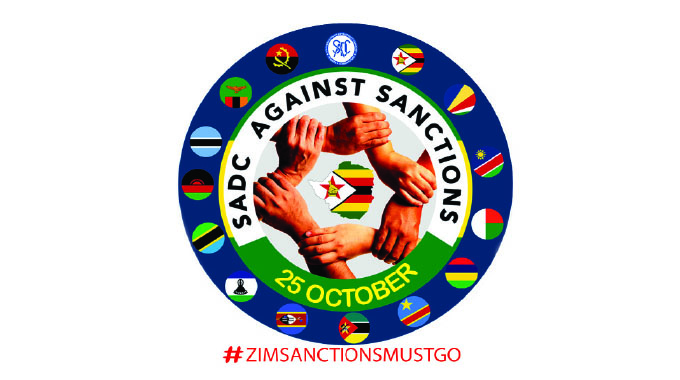Agric sector defies sanctions

Bulawayo Bureau
The country is expecting to harvest at least 2,7 million tonnes of maize this year, the highest yield in 20 years, a microcosm of how the country’s farming sector is defying sanctions.
Western countries imposed illegal sanctions on Zimbabwe after rolling out the land reform programme in 2000, crippling many sectors of the economy.
The agriculture sector was also battered, but is now on an upward trajectory which if sustained will see Zimbabwe regaining its “Africa’s bread basket” status.
Despite the effects of the illegal sanctions, Government has not been resting on its laurels as it has been doing its best to ensure food security by investing in agriculture through programmes such as the Command Agriculture and the Presidential Well- Wishers Input Scheme. Tobacco production has been on the increase as well since the launch of the land reform programme.
More than 140 000 farmers now engage in tobacco production, while close to one million people are directly dependent on the golden leaf.
A total of 205,9 kilogrammes of tobacco worth US$574,8 million had been delivered for auction as at August 23, surpassing this year’s projection of 200 million kg by 2,95 percent.
The 2021 tobacco marketing season officially closed on July 14.
Last year the country produced a total of 184 million kg of the golden leaf.
Tobacco generates 30 percent of the country’s foreign currency, bringing in over US$600 million annually.
According to the Tobacco Industry and Marketing Board, tobacco exports have so far earned the country US$763 million with more value-added tobacco in the form of cut rag and cut stems having been exported in 2020 compared to 2019. The Presidential Input Scheme has helped in the resuscitation of the cotton industry which is a major source of employment for the farmers.
Financially, cotton has been bringing in an average of US$70 million annually.
Earnings have grown from US$11 million in 2016 up to US$70 million at present and benefits have accrued along the value chain and around the cotton production ecosystem.
The cotton industry is a key catalyst and driver of economic development in rural areas. Apart from the financial benefits that accrue to the farmers, the entire ecosystem and local economies are benefiting from cotton production and this include, but not limited to local authorities, banks, shops, transporters and schools. Zimbabwe expects to harvest up to 2,7 million tonnes of maize this year, three times the 2020 output thanks to higher than usual rainfall.
The Government is expecting an increase in crop production under Command Agriculture after the planting hectarage increased by over 18 percent for the 2020/21 farming season, with maize, tobacco and cotton yields expected to rise.
The country is also anticipating to record more than 320 000 metric tonnes of wheat, against a national annual requirement of 360 000 metric tonnes following a successful season.
Zimbabwe also has also launched the Livestock Growth Plan aimed at increasing cattle numbers to six million by 2025.
Recently, Lands, Agriculture, Fisheries, Water and Rural Resettlement Deputy Minister Vangelis Peter Haritatos said indeed- the country was poised for an agricultural revolution riding on the National Enhanced Agricultural Productivity Scheme (NEAPS) also known as Command Agriculture and Pfumvudza/Intwasa programmes.
“According to our Second Round Crop and Livestock Assessment which estimates average yield and therefore expected output, amongst other things, we are expecting a 199 percent increase in maize to approximately 2,7 million metric tonnes, a 51percent increase in soya beans to approximately 71,000tonnes, an increase in traditional grains of approximately 128percent when compared to last year, and 94 percent increase in cotton production to 196,000 tonnes,” he said.
The Minister, Dr Anxious Masuka said Government is accelerating the development of irrigation and water infrastructure to cover a total of 350 000 ha of farming land in the next three seasons to boost agriculture production.
Over 2,3 million small holder farmers benefit from social protection schemes annually while over 15 000 farmers benefit from Command Agriculture annually.
Zimbabwe Farmers Union (ZFU) director, Mr Paul Zakariya said after years of acquiring land the yields have increased significantly.
He said this was a clear indication of the country’s resilience in the wake of effects of the illegal sanctions.
“There have been significant improvements in the agricultural sector over the years. Our yield and output have increased significantly. For example, under wheat the country surpassed its target and this also applies to tobacco production,” he said.
He said the horticulture fund has also gone a long way in rebuilding the sector.
“More people are now into horticulture and we are seeing production of a wide variety of crops. A number of farmers are producing these commodities for export,” said Mr Zakariya.
“A lot has been done to ensure food and nutrition security in the country. We are on a growth trajectory as a nation.”
Mr Zakariya said there has been an increase in water bodies across the country which has helped in terms of rehabilitation of boreholes.
He said inputs were being distributed on time thus assisting to boost production levels.
Mr Zakariya said the state of the country’s agriculture sector was a sign of the nation’s resilience in the wake of illegal sanctions. He said the current projects being undertaken by the Second Republic should be applauded as they are being done under a sanctioned environment.
“It has been 21 years since illegal sanctions were imposed on us a country. Through these illegal sanctions, we can’t access some foreign markets for export, open offshore bank accounts or access offshore credit lines to finance our agricultural activities,” he said.
“Despite these hurdles, Government has managed to rely on locally available resources to develop the agricultural sector. The Second Republic has also put in place smart policies to promote investment in the agricultural sector.”
Arda CEO Tinotenda Mhiko said with this trajectory Zimbabwe will leapfrog into becoming a US$8,2 billion agriculture economy by 2025 in line with the Agriculture and Food Systems Transformation Strategy, the National Development Strategy 1 and Vision 2030.
He said complementing Government efforts to resuscitate the agriculture sector and restore the country’s yesteryear breadbasket status, Arda is leaving no stone unturned in order to achieve national food, feed, fibre and bio-fuels security.
“Pursuant to that, we have already started the process of revamping, retooling and operationalising various irrigation schemes across the country through our Vision 30 Accelerator Irrigation Model, that was launched in Bubi Lupane. This model is being replicated at all our irrigation schemes throughout the country,” he said.
“To put this into perspective, the Vision 2030 is taking on board 55, 000 direct beneficiary households, one million indirect beneficiaries with a combined output of 117 000 tonnes of maize and 130 000 tonnes of wheat, annually. Further to that, in terms of our transformational strategy, we are revitalising all our existing estates and opening up new irrigable land to achieve production, productivity and profitability.”
Mr Mhiko said with increased production at Arda estates and irrigation schemes across the country, there are countless opportunities and milestones in terms of employment creation, income generation and contribution to export receipts through value added and beneficiated products from all Arda enterprises.
“Ultimately, all these measures and interventions will go a long way in ameliorating the living standards especially for the marginalised communities. To drive our transformational strategy alluded to above, we have set up two broad anchor pillars, namely: Rural Development and Industrialisation, and Agriculture and Agro-Industry Development,” he added.
“We are also on an accelerated programme to resuscitate and manage 23 dairy schemes across the country to increase on milk output and value addition. Last but not least, we have implemented the climate-proofed Pfumvudza/Intwasa program on a commercial scale where we are focusing on zero tillage on our various irrigation schemes across the country.”
Other sectors of the economy continue to reel from the effects of the sanctions.
Renowned economist and Africa Economic Development Studies (AEDS) executive director Dr Gift Mugano said Zimbabwe’s economy was strangled as most of the country’s sectors were dependent on the Western capitals.
“Sanctions have disturbed the entire economy. If you look at the provisions of Zimbabwe Democracy and Economic Recovery Act (ZIDERA), it is stated that Zimbabwe must not be supported by the governors of IMF who are in the United States, for example when it comes to debt clearance,” he said.
“If the country wants to borrow capital from World Bank, IMF and other regional banks, it can’t access capital because of sanctions despite having cleared the IMF debt.”







Comments